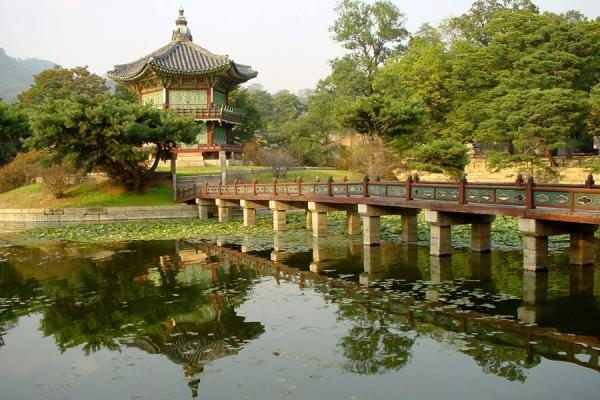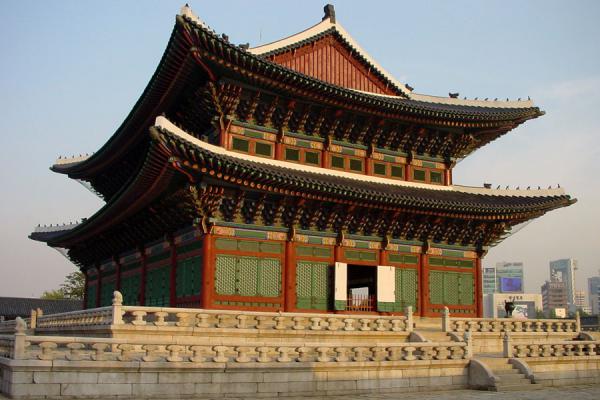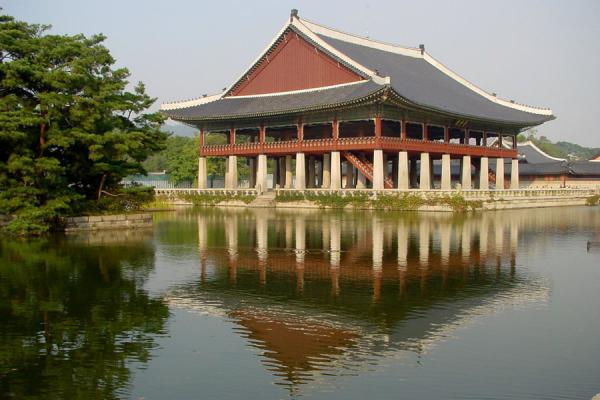PODROZE / JOURNEYS
Komentarze: 2
Wrocilam, wrocilam, wrocilam…. Ah… spedzilam czas fantastycznie a teraz czuje sie doenergetyzowana I pelna nowych planow. Semestr zacznie sie za dwa tygodnie, mam takze troche czasu na odpoczynek i zajmowanie sie rzeczami, ktore mnie interesuja. W Hong Kongu jest zimno. Jestem troche przeziebiona, nie mamy ogrzewania a w pokojach jest moze jakies 10-15C. Mam na sobie trzy swetry, siedze pod kocem i pije miodowo-imbirowa herbate przywieziona z Korei.
A podroz byla taka:
1. Pierwszy kontakt z Ameryka na lotnisku w Chicago – co trzecia osoba jadla hamburgera, co trzecia osoba wygladala na wiecej jak 110kg, ludzie byli nieformalnie ubrani I generalnie taka fajna, luzna I mila atmosfera. Wszyscy byli bardzo mili.
2. W Kentucky – zobaczylam jak zyja ludzie w Ameryce I co jedza na sniadanie, jezdzilam po prawdziwej amerykanskiej autostradzie posrod tych wszystkich ogromny samochodow I po raz pierwszy zobaczylam samochod z automatyczna skrzynia biegow. Potem przejechalam przez Wersal I zobaczylam tamtejszy zamek!!! Hehe, kto by pomyslal… No I przywitalam tam Nowy Rok I pobawilam sie troche tymi wszystimi robiaczami halasu.
No I w Louisville bylam jeszcze w Art Speed Museum (obrazy ponizej)
---
I’m back, back, back. Oh… the journey was fantastic and now I feel so energized and full of new plans. The semester will start in two weeks so I have some time just to do things I like. It’s cold in Hong Kong. There is no heating in the rooms so inside it’s maybe 10-15C . I have a cold and I’m wearing 3 sweaters, sitting under blankets and drinking honey-ginger tea brought from Korea.
And the journey was like that:
1. First contact with America at the airport in Chicago – every third person eating a hamburger, many very fat people (maybe over 110kg) and those whom I’ve seen were usually informally dressed. And generally the atmosphere was very relaxed and informal. It was great, everyone was very nice.
2. In Kentucky – I saw how usually people live in the States and what do they eat for breakfast. I was on a real American highway among all of those big cars and for the first time I saw a car with automatic gear. I also passed through Versaille and saw a castle there!!! :) who would think about that!
I started the New Year there and had fun with all of the sound-makers.
In Louisville I also went to Speed Art Museum

Alice Neel ‘ Priscilla Johnson’ 1966

Constantin Brancusi ‘ Mademoiselle Pogany’ 1913
3. W Chicago : Instytut Sztuki I nowe odkrycia / In Chicago: Art Institute and new discoveries.
Leon Golub
Aktywista wolnosci kulturalnych I obywatelskich. Glownie zajmuje sie kwestiami dotyczacymi Centralnej Ameryki.
Cultural and civil rights activist being especially involved in issues regarding Central America.

‘Interrogation II’ 1981
Anri Sala
Artysta medialny i fotograf / Media artist and photographer.
“to co jest nadal interesujace aby sie w to zaangazowac I poswiecic jest dzwiek. Dzwiek jest o jeden krok od jezyka […] ale jak tylko jestes na ulicy, wiekszosc dzwiekow jest nieposkromiona, sa w stanie stawania sie. Sa czescia jezyka, ktory nie jest jeszcze kontrolowany. I to jest dlaczego interesuje sie dzwiekiem; on jest jak niekompletna muzyka”. Sala, wolne tlumaczenie
To co on tutaj zrobil to pokazal zaleznosc pomiedzy muzyka a filmem. Sfilmowal grupe ludzi nagrywajaca koncert rockowy I wykonujacych gesty do tej muzyki, a potem pozbawil koncert dzwieku I podlozyl inna sciezke dzwiekowa – soundtrack to filmu, ktory jest o wiele wolniejszy a dzwieki sa bardzo niskie. Powietrze wydaje sie wtedy poruszac I jest tam jeszcze maly, balonowy piesek ktory unosi sie w powietrzu obok postaci. Ah… w kazdym razie warto zobaczyc

“Now I See”, 2004 9-minutowy film/ 9-minute film
“ what is still interesting to engage with and to pursue is sound. Sound is one step away from language […] but once you are in the street, most sounds are untamed, they are in the act of becoming. They are part of a language that is not yet controlled. And that is why I’m interested in sound; it’s like an incomplete music” Sala
This what he did here was to show relationship between music and film. First, he filmed a group of people recording a rock concert and making gestures to this music. After that he took the sound away and replaced it with much slower and lower in tones soundtrack. The air seemed to move then and in addition a small dog-like balloon was floating in the air near the people. Oh… anyway, it’s worth seeing.
4. Chicago, Muzeum Sztuki Wspolczesnej / Chicago, Museum of Contemporary Art
Okrylam Kai Althoffa (jego wystawa Kai Kein Respect) – artysta z Kolonii, muzyk (jego zespol ‘Workshop’):
“wiele z jego prac bada zarowno przyjemnosci jak I niebezpieczenstwa przynaleznosci do grupy, bez wzgledu czy na poziomie rodziny, grupy rowiesnikow, instytucji spolecznych czy narodu. W ten sposob sztuka Althoffa odkrywa fundamentalne pytania tozsamosci I przynaleznosci, spolecznosci I wiary”
---
I discovered Kai Althoff (exhibition Kai Kein Respekt) – artist from Cologne and a musician (his band “Workshop”)
‘many of his works investigate both the pleasures and dangers of belonging to a group, whether at the level of family, peer group, social institution or nation. In this way Althoff’s art explores fundamental questions of identity and belonging, community and belief'

Althoff, ‘He wants to see it all/Chce zobaczyc to wszystko’ 2002

Althoff ‘The flesh of his bones/ Mieso jego kosci’ 2002 left/z lewej
Althoff “Growing up, Fabio” 1992 right
" Growing up, Fabio" (Dorastajac, Fabio) To ma byc seria ilustracji to bajki dla dzieci. Opowiada ona o chlopcu, Fabio, ktory odkrywa swoje homoseksualne sklonnosci. Tutaj jest nadzieja, ze pewnego dnia takie ksiazki beda uwazane za cos naturalnego, a homoseksualizm bedzie traktowany jako normalny stan rzeczy.
" Growing up, Fabio" This is to be an illustration for a story for children. It talks about a boy, Fabio, who is discovering and coming to terms with his homosexuality. Here is hope, that one day books like that will be treated as something natural, and homosexuality will be treated as something normal.
5. Potem bylam w Korei Poludniowej. Zatrzymalam sie w Seoul Guesthouse. Drzwi – okno mojego pokoju to pierwsze z prawej / Later I went to South Korea. I stayed in Seoul Guesthouse, The door-window of my room was the first from the right.

Zobaczylam krolewski palace
Gyeongbokgung: Ale teraz, zima – padajacy snieg I zamarznieta woda w oczkach dodala wszystkiemu uroku.
I saw Royal Palaces.
Gyeongbokgung. Now during winter when it’s snowing and water in the ponds is frozen, everything has a mysterious atmosphere.



(downloaded from www.traveladventures.org)
Changdeokgung Palace


Nauczylam sie troche o burzliwej historii kraju I o okupacji japonskiej. Poniewaz czytalam wczesniej o tym konfucjanizmie I roli kobiet chcialam zobaczyc jak to wszystko tam wyglada. Wnioski? Prawie kazda kobieta (nawet nastolatki), ktora spotkalam na ulicy czy gdziekolwiek indziej, nosila buty na szpilkach I byla ubrana bardzo ‘kobieco’ (spudnice, garsonki…) To chyba o czyms swiadczy.
Zjadlam czekolade z duza dawka chili, wypilam ryzowa whisky I zjadlam gimchi (wazywa marynowana w sosie czosnkowo-chili), zupe z wodorostow I prazone kasztany.
----
I learnt a lot about the history of the country and especially about the Japanese occupation. Because I’ve been reading about Confucianism before and the role of women in Korea, I wanted to see how it looks like in reality. Conclusions? Almost every woman I’ve seen was wearing high-heel shoes or very feminine clothes. It means something, I think.
I ate chocolate with chili, drunk rice whisky and ate gimchi (vegetable pickled in chili-garlic sauce), seaweed soup and roasted chestnuts.
Bylam tez w Muzeum Sztuki Nowoczesnej. Bylo tam duzo malarstwa zwiazanego z wojnami I rebeliami, ktore przetoczyly sie przez region w ostatnim wielu. Sa bardzo uniwersalne I w wielu przypadkach mozna je tez odniesc do historii europejskiej.
I also visited Museum of Contemporary Art. There were many paintings linked to wars and rebels that happened in the country during the last century. They are very universal and in many cases also resemble some issues from European history.

“Korean Modern History” Shin, Hak-Chul 1996
Jedno z najbardziej niesamowitych zobrazowan historii jakie kiedykolwiek widzialam.
One of the most amazing illustrations of history I have ever seen.

“Huangjii 330” Hwang Jai-hyoung 1981

“Untitled” Kim Myung-sook 1987 Pain, genocide, loneliness
Bol, ludobojstwo, samotnosc.
Byla tam tez wystawa niezwykle poruszajacych obrazow Shin Soon Nam, ktory doswiadczyl deportacji koreanskich ludzi w czasie Stalina (w latach ’30 okolo 170 000 ludzi bylo deportowanych na Syberie albo w glab ZSRR) Mowi o swojej misji uswiadamiania ludziom co sie stalo I ile cierpienia te wydarzenia ze soba niosly.
Bylo tam jeszcze kilka innych interesujacych prac. Trafilam tez na wystawe “Mlodzi Artysci z Chin, Japonii I Korei” I to byl chyba najwspanialszy punkt w muzeach w czasie calej mojej podrozy. Instalacje I filmy byly fenomenalne
Cheon, Seongmyoung “Asking the road” (Pytajac sie o droge) 2004 - wyswietlony ksiezyc z projektora I bialy namiot-tunel w ktorym pewna kukla (tez wyswietlana, wygladajaca jak lunatyk) chodzi od jednego konca do drugiego powtarzajac jakac mantre (brzmiala jakby z rytualu wudu)
Jo, Seub “When the day will come” (Kiedy nadejdzie dzien) 2004 – film. Najpierw prezentowana jest grupka ludzi przed pomnikiem przypominajacym zolnierzy ruszajacych do walki (z boku ukratkiem, jeden zolniez z gupy prawdziwych ludzi zajada hamburgera z McDonalda) nagle muzyka zaczyna grac glosniej I jedna z kobiet zaczyna plakac I calowac rece zolnierzy (tak jakby zegnala ich przed ich wyruszeniem na wojne) – zolniez nadal je hamburgera. Na koniec wszyscy odchodza smiejac sie.
A potem jest wojna (przypuszczalnie Polnocna I Poludniowa Korea). Duzo krwi I strzelania. Zolnierz z Polnocnej Korei zostaje postrzelony w penisa, kobieta z czerwonego krzyza z Korei Poludniowej leczy go namietnie ustami.
Potem ta kobieta jest postrzelona w piers, teraz zolnierz leczy ja ustami.
Tak zaczyna sie romans a na koncu I tak wszyscy sa martwi.
I wracamy do pomnika. Tam kobieta znowu placze a zolnierz zajada hamburgera.
Fenomenalne!
----------------------------------------
There was also a very moving exhibition of Shin Soon Nam’s paintings. He experienced deportation of Korean people during Stalin (in 30s around 170 000 people where deported to Siberia or somewhere to the USSR), He talks about his mission of reminding people what happened and how much suffering those times brought.
There were few more interesting works. I was lucky to be in the museum at the time of the exhibition “Young Artists from China, Japan and Korea”. And it was probably the most interesting thing in museums during my journey. Installations and films were phenomenal.
Cheon, Seongmyoung “Asking the road” 2004 – there was a moon projected on a wall and a white tent-tunnel in which a kind of small doll (also projected) was walking from one side to another repeating a kind of mantra which sounded like one from voodoo rituals.
Jo, Seub “When the day will come” 2004 – a film. First there was a group of people next to a monument resembling an army rushing to fight (on side, one of those in the group – a soldier – is eating a hamburger from McDonald’s. He tries to hide it so others won't see). At some point the music gets louder, one of the women starts crying and kissing hand of the soldiers-monuments (like if saying goodbye before they left to the war) – the soldier from the group is still eating the hamburger. At the end everyone leaves laughing.
Now there is a battlefield (supposedly during a war between South and North Koreas): lots of blood and shooting. A soldier from North Korea gets shot in his penis; a woman from South Korean Red Cross passionately cures him with her mouth.
Later this woman is shot in her breast, now the soldier is curing her with his mouth.
It seems to be the beginning of an affair, but anyway at the end everyone is shot dead.
And now back at the monument. The woman is still crying and the soldier eating a hamburger.
Phenomenal!
Dodaj komentarz